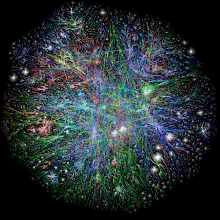In December 2001, Neilsen/Net Ratings found that female Internet users made up the majority (52%) of the Internet population in the USA (Flew 2004, 75). A 2005 study by Deborah Fallows of the Pew Internet and American Life Project entitled How Women and Men Use the Internet found that although the percentage of women using the Internet was slightly lower than men, “women under 30 and black women outpace[d] their male peers”. From this it is clear to see that, as Terry Flew (2004, 75) suggests in his book New Media: an introduction, the ‘gender gap’ in virtual cultures, the Internet and ICT’s is diminishing, and at a rapid pace.
However, although women are closing the gap, and in some cases overtaking men, are men and women using the Internet for the same reasons and with the same motivations? Or does our gender influence the way in which we use the Internet? When I consider the ways in which the men I know use the Internet, compared to the ways in which I and fellow females use it, my immediate thoughts are quite simply – no. How Women and Men Use the Internet proves this, highlighting the many differences between male and female Internet use. One aspect that particularly interested me was women’s response to online communication and virtual cultures. The report states that “men like the internet for the experience it offers, while women like it for the human connections it promotes” (Fallows 2005). It goes on to say that women are more enthusiastic online communicators, and use email more frequently, on a more personal level than men. Women are also more likely to experience satisfaction with the role email plays in their lives, especially when it comes to nurturing and enhancing their relationships (Fallows 2005). Furthermore, a large-scale social networking study conducted by Rapleaf found that overall, women spend more time than men on social networks, building and nurturing relationships, and in turn making more ‘friends’. Alternatively, the study showed that men are mainly “acquiring relationships from a transactional standpoint” (Rapleaf 2008).
And so it seems that gender does play an influential role in virtual cultures and Internet use. However, doesn’t it always? To me the role of gender in online environments simply mirrors the role of gender in the ‘real world’ - the ‘gap’ between men and women has been rapidly diminishing in recent years, and in many cases, women are becoming the more dominant sex. And no matter what the activity or task at hand, men and women are almost always going to behave and react differently. I feel that if new media technologies are a reflection of the way in which society and human behaviour has advanced, then it is only appropriate that online human behaviours reflect this advancement too.
References
Flew, T. 2004. Virtual Cultures. In New Media: an introduction, ed. T. Flew, 61-82.

